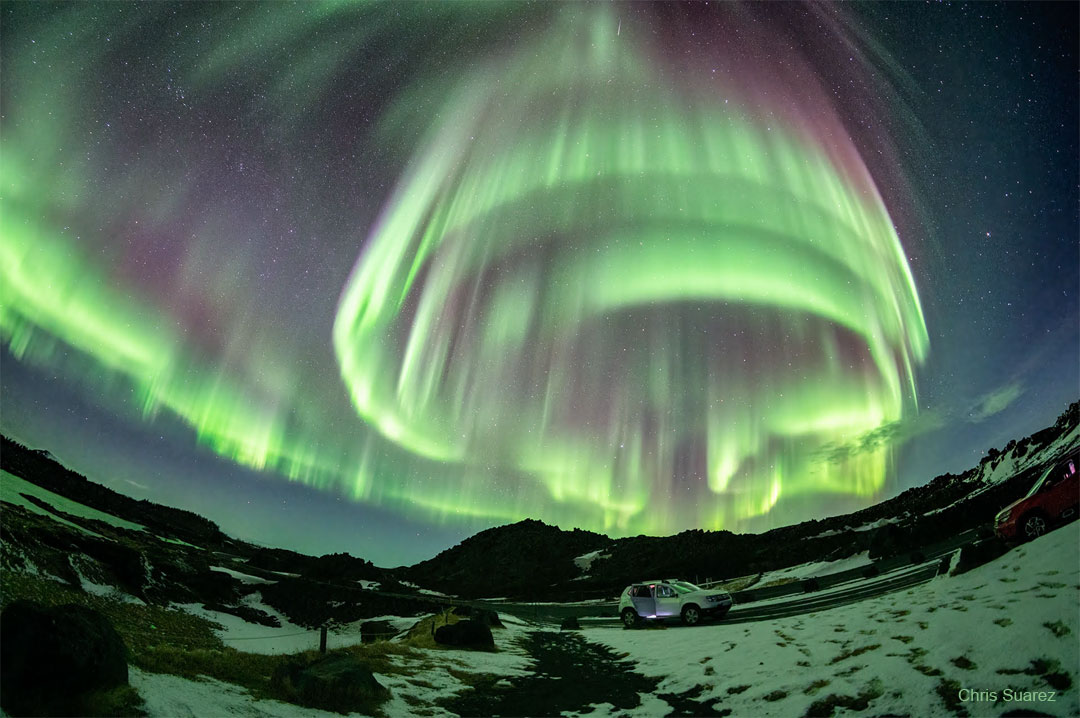2022年4月4日
A Vortex Aurora over Iceland
Image Credit & Copyright: Christophe Suarez
Explanation: No, the car was not in danger of being vacuumed into space by the big sky vortex. For one reason, the vortex was really an aurora, and since auroras are created by particles striking the Earth from space, they do not create a vacuum. This rapidly developing auroral display was caused by a Coronal Mass Ejection from the Sun that passed by the Earth closely enough to cause a ripple in Earth’s magnetosphere. The upper red parts of the aurora occur over 250 kilometers high with its red glow created by atmospheric atomic oxygen directly energized by incoming particles. The lower green parts of the aurora occur over 100 kilometers high with its green glow created by atmospheric atomic oxygen energized indirectly by collisions with first-energized molecular nitrogen. Below 100 kilometers, there is little atomic oxygen, which is why auroras end abruptly. The concentric cylinders depict a dramatic auroral corona as seen from the side. The featured image was created from a single 3-second exposure taken in mid-March over Lake Myvatn in Iceland.
April is: Global Astronomy Month
Tomorrow’s picture: california seven
冰岛上空的极光涡旋
影像提供与版权: Christophe Suarez
说明: 这部车并没有被庞大极光涡旋吸入太空的危险。理由之一:这是个极光涡旋,而极光是来自太空的粒子撞击地球的产物,所以并不会形成真空。这例发展快速的极光活动,是由源自太阳并近距离通过地球、因此造成地球磁层波动的日冕物质抛射所触发的。在这例极光里,高度超过250公里的泛红上层区,源自被入射的高能粒子所直接激发的大气氧原子。而高度略高于100公里的较低层泛绿极光,则是因大气氧原子与先前被激发的大气氮分子碰撞后,间接受激发所发出的辉光。低于100公里的高空几乎无氧原子,因此极光截止于此高度附近。这幅侧视此同心圆轴状精采极光冕的主题影像,建构自今年3月中旬摄于冰岛Myvat湖的3秒单曝光照片。
四月是: 全球天文月
明日的图片: california seven







